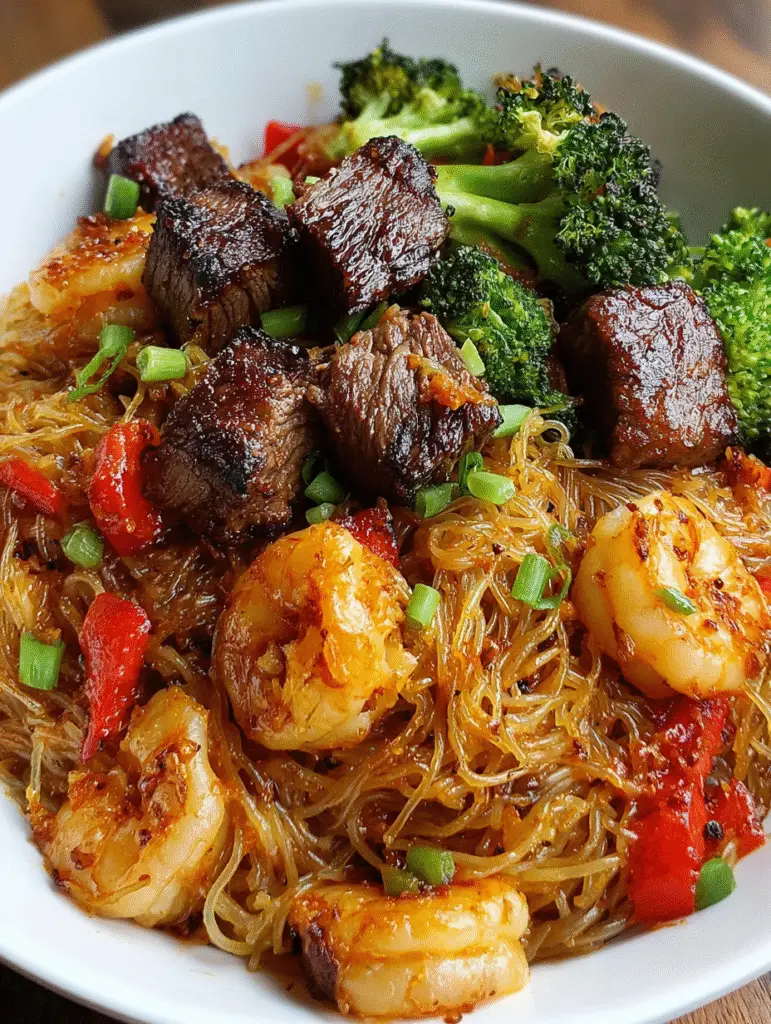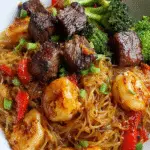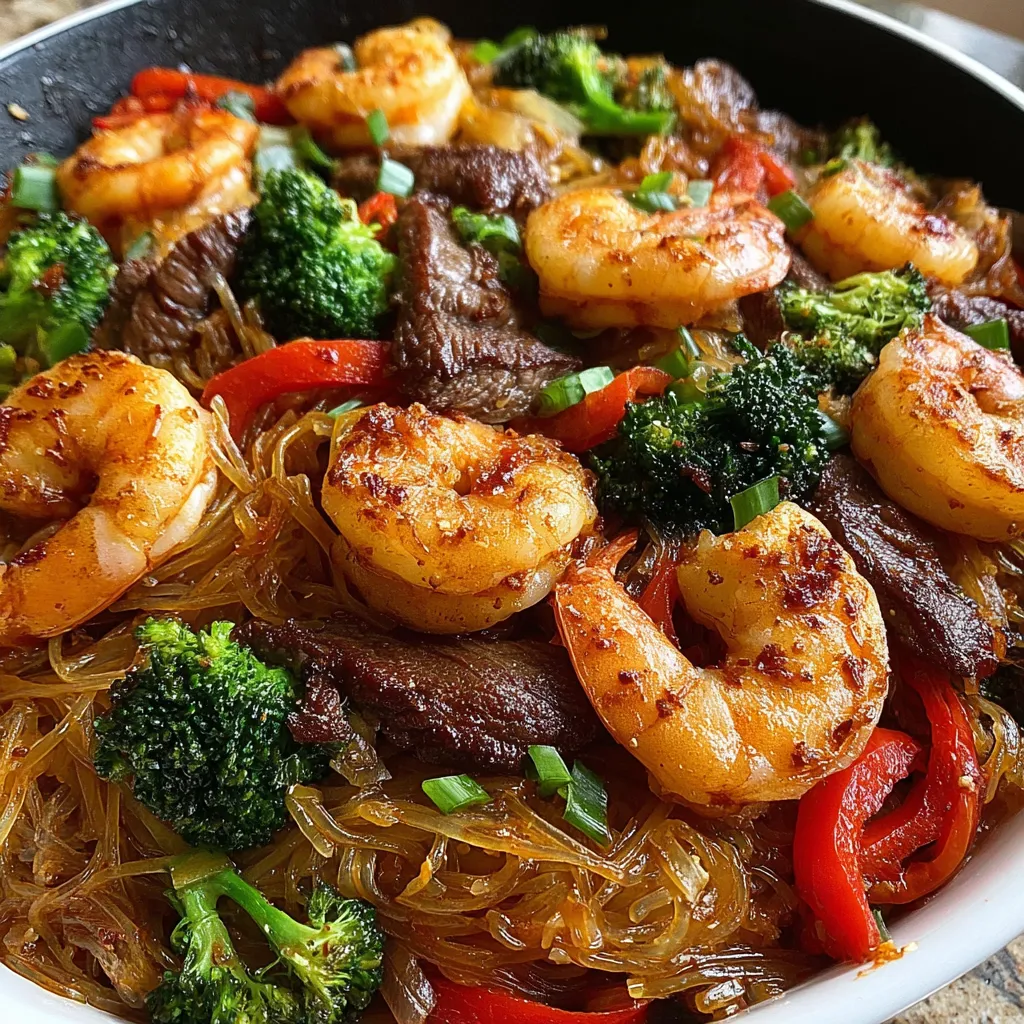Someone in Asia figured out that if you combine nutty sesame, fiery chili oil, creamy peanut butter, and chewy noodles, you get something that makes your taste buds do a happy dance while your mouth is on fire. Then the internet discovered it and now we all have this weapon in our “I need dinner in 15 minutes” arsenal. These are slurpy, spicy, nutty noodles that are somehow both comforting and exciting. They’re the kind of meal that makes you sweat a little, reach for water constantly, and still twirl another forkful before you’ve even swallowed the last one.
This isn’t some delicate, refined noodle dish that requires special techniques. This is “boil noodles, make sauce, toss together, devour” simplicity that somehow tastes like it came from your favorite hole-in-the-wall noodle spot. The peanut butter makes it creamy and rich. The chili oil brings heat and complexity. The soy sauce adds umami. The garlic and ginger make everything come alive. It’s what happens when you stop overthinking dinner and just combine things that taste incredible together.
This is late-night craving energy in noodle form. It’s what happens when you need something fast, spicy, and satisfying and don’t want to order takeout. It’s dinner that feels like a treat but costs $5 and takes 15 minutes.
Why These Noodles Are About to Ruin All Other Noodles for You
- 15-minute miracle — From kitchen to face-stuffing in a quarter hour
- Pantry-friendly — Most ingredients you probably already have
- Dangerously addictive — The spice-peanut combo is scientifically proven to be crack
- Infinitely customizable — Add protein, vegetables, whatever you want
- Cold or hot — Works as a warm dinner or cold lunch the next day
- One-bowl wonder — Minimal dishes, maximum flavor

The Stuff You Need
For the Noodles:
- 12 oz noodles (spaghetti, lo mein, ramen, rice noodles, udon—literally any noodles work)
- 1 tablespoon sesame oil (for tossing)
- 2 green onions, sliced (for garnish)
- 1 tablespoon sesame seeds, toasted (white or black)
- Crushed peanuts for topping (optional but adds crunch)
For the Spicy Peanut Sauce:
- 1/3 cup creamy peanut butter (not natural—the regular Jif/Skippy kind)
- 3 tablespoons soy sauce (or tamari for gluten-free)
- 2 tablespoons chili oil (with sediment—the good stuff)
- 1 tablespoon rice vinegar (or any vinegar)
- 1 tablespoon sesame oil (toasted, for flavor)
- 1 tablespoon honey or brown sugar
- 2-3 cloves garlic, minced or grated
- 1 tablespoon fresh ginger, grated
- 2-4 tablespoons hot water (to thin the sauce)
- 1 teaspoon sriracha or more chili oil (adjust heat to preference)
Optional Protein Add-Ins:
- 1 lb chicken, cooked and sliced
- 1 lb shrimp, sautéed
- 1 block (14 oz) firm tofu, pan-fried until crispy
- 2 soft-boiled eggs, halved
- Ground pork or beef, cooked and crumbled
- Rotisserie chicken, shredded
Optional Vegetable Add-Ins:
- Cucumber, julienned (adds freshness)
- Bell peppers, sliced thin
- Shredded cabbage or coleslaw mix
- Edamame, shelled
- Snap peas or snow peas
- Bok choy, steamed
- Bean sprouts
- Shredded carrots
Optional Flavor Boosters:
- Fresh cilantro, chopped
- Thai basil leaves
- Lime wedges for squeezing
- Extra chili crisp on top
- Pickled vegetables
- Nori strips
Special Equipment:
- Large pot for boiling noodles
- Whisk or fork for sauce
- Medium bowl for mixing
- Tongs for tossing
- Microplane for garlic and ginger (makes life easier)
Let’s Make These Noodles That’ll Make You Question All Your Life Choices Up Until This Point
Step 1: The Noodle Situation
Bring a large pot of water to a boil. No need to salt it heavily—the sauce is salty enough. Cook your noodles according to package directions until just al dente. You want them tender but still with a little chew. Fresh noodles take 2-3 minutes. Dried pasta takes 8-10 minutes. Instant ramen takes 3 minutes. You know what to do.
Step 2: The Noodle Prep
Drain the noodles but save 1/2 cup of the cooking water. This starchy water is gold for adjusting sauce consistency later. Rinse the noodles briefly under cold water to stop them from cooking and to remove excess starch (this prevents clumping). Toss them with 1 tablespoon of sesame oil to keep them from sticking together. Set aside.
Step 3: The Sauce Assembly
In a medium bowl, combine the peanut butter, soy sauce, chili oil, rice vinegar, sesame oil, honey, garlic, and ginger. Whisk aggressively until everything is combined. It’ll look thick and paste-like at first. This is correct. Don’t panic.
Step 4: The Sauce Thinning
Add hot water 1 tablespoon at a time, whisking after each addition, until the sauce reaches a pourable consistency. You want it thick enough to coat noodles but thin enough to actually mix through them. Aim for something like heavy cream consistency. If you want more heat, add sriracha or more chili oil now. Taste it. Adjust salt, sweet, spice as needed.
Step 5: The Marriage
Add the cooked noodles to the bowl with the sauce. Using tongs or chopsticks, toss everything together, lifting and turning until every strand is coated in that spicy peanut goodness. If the sauce is too thick and the noodles aren’t coating properly, add some of that reserved pasta water a tablespoon at a time until it’s perfect. The noodles should be slick and glossy.
Step 6: The Protein Addition (If Using)
If you’re adding protein, do it now. Nestle cooked chicken, shrimp, tofu, or whatever into the noodles. Toss gently to combine. If you’re doing soft-boiled eggs, place them on top after plating because they’re delicate and will break if you toss them.
Step 7: The Vegetable Integration (If Using)
If you’re adding vegetables, either toss them in now (for raw stuff like cucumber and carrots) or cook them separately and add them. Bean sprouts, snap peas, and bok choy are great blanched in the noodle water for 30 seconds before you cook the noodles. Efficiency.
Step 8: The Garnish Game
Transfer to serving bowls or eat straight from the mixing bowl (no judgment here). Top with sliced green onions, toasted sesame seeds, crushed peanuts, fresh cilantro, or whatever toppings make you happy. Add a lime wedge on the side for squeezing. Maybe add more chili crisp if you’re brave.
Step 9: The Mixing Ritual
Before taking your first bite, mix everything one more time. Get those toppings distributed. Make sure every component is present in every bite. This is the kind of dish that benefits from aggressive tossing.
Step 10: The Eating
Slurp up a big forkful or chopstickful. Feel the creamy peanut sauce coat your mouth first. Then the heat builds from the chili oil. Taste the umami from the soy sauce. Notice how the noodles are perfectly chewy. Drink some water. Take another bite immediately because the spice is addictive. Repeat until the bowl is empty and you’re contemplating making another batch.
Pro Tips From Someone Who Eats This Weekly
Use Regular Peanut Butter: Natural peanut butter is too oily and separates. The processed stuff (Jif, Skippy) emulsifies better.
Don’t Skip the Ginger: It adds brightness that balances the richness. Fresh ginger is way better than ground.
Chili Oil with Sediment: The crunchy bits at the bottom are where the flavor is. Use those.
Adjust the Sauce: Start with less liquid, add more. Too thin and it’s soup. Too thick and it’s paste.
Rinse the Noodles: For cold noodles especially, rinsing removes excess starch and prevents gloopiness.
Make Extra Sauce: This sauce keeps for a week in the fridge. Make double, use it on everything.
Customize the Heat: Start mild, add more chili oil at the end if you want more kick.
Switch It Up (Because Variety Keeps Dinner Interesting)
Cold Sesame Peanut Noodles: Make it, chill it completely, serve cold. Perfect for summer or meal prep.
Thai-Inspired Version: Add lime juice and fish sauce to the sauce. Top with cilantro, mint, and basil.
Miso Peanut Noodles: Add 1 tablespoon white miso paste to the sauce. Extra umami bomb.
Coconut Peanut Noodles: Replace some of the water with coconut milk. Richer and creamier.
Dan Dan Style: Add Sichuan peppercorns to the sauce and top with ground pork cooked with doubanjiang.
Sweet and Spicy: Increase honey and add a splash of hoisin sauce. More dessert-y vibes.
Almond Butter Version: Use almond butter instead of peanut for a different nutty flavor.
Make-Ahead Magic
The Sauce: Make the sauce up to a week ahead. Store in the fridge in a jar. Shake before using.
Cold Noodle Meal Prep: Make the whole dish, portion into containers. Eat cold for lunch all week.
Components Separately: Cook noodles and protein ahead. Store separately. Toss with fresh sauce when ready to eat.
Freezing (Not Recommended): The sauce doesn’t freeze well, and cooked noodles get mushy when frozen.
Storage Real Talk
Refrigerated: Keeps for 3-4 days in an airtight container. The noodles absorb sauce, so add a splash of water when reheating.
Eat Cold: Honestly, these are amazing cold straight from the fridge. No reheating necessary.
Reheating: If you must reheat, microwave with a splash of water or toss in a skillet with a bit more sauce.
The Sauce Thickens: It’ll get paste-like in the fridge. Add water to thin it back out.
Perfect Pairings
Ice Cold Beer: The best thing to pair with spicy noodles. The cold cuts through the heat.
Cucumber Salad: Something cool and crunchy to balance the spice.
Steamed Dumplings: Make it a full noodle-dumpling feast.
Pickled Vegetables: The acidity cuts through the richness perfectly.
More Chili Oil: Just put the jar on the table. Let people add more.
Nothing Else: This is a complete meal. Carbs, protein (if you added it), vegetables (if you’re pretending), and flavor for days.
The Science of Addictive Noodles
Peanut butter contains fat that creates a creamy mouthfeel and carries flavors. The capsaicin in chili oil triggers pain receptors, which releases endorphins—literally getting you high on spice. The combination of fat, salt, sweet, and umami hits all the flavor receptors, making it incredibly satisfying.
The noodles provide textural satisfaction—the chewiness is crucial. The contrast between creamy sauce and chewy noodles, crunchy peanuts and soft noodles, creates textural complexity that keeps you interested bite after bite. The heat builds gradually, which keeps you coming back for more even as your mouth is on fire.
When to Make These Spicy Peanut Chili Oil Noodles
Weeknight Dinner Rush: When you have 15 minutes and need real food fast.
Late-Night Craving: When it’s 11 PM and you need something spicy and satisfying immediately.
Meal Prep Sunday: Make a big batch, eat cold for lunch all week.
Hangover Cure: Spicy, carb-loaded, savory. Checks all the boxes.
Potluck Contribution: Serve these cold as a noodle salad. People will lose their minds.
Post-Workout Meal: Carbs for energy, protein (if you added it), and enough spice to make you feel alive.
Why These Noodles Work So Damn Well
Spicy Peanut Chili Oil Noodles work because they hit every flavor note—salty, sweet, spicy, umami, tangy—all at once. The peanut butter makes them rich and satisfying. The chili oil makes them exciting. The simplicity makes them accessible. You don’t need special equipment or hard-to-find ingredients. Just pantry staples and 15 minutes.
They’re also endlessly adaptable. Add whatever protein you have. Use whatever vegetables need to be used up. Make it mild or make it burn. It’s the kind of recipe that becomes a template for whatever mood you’re in.
This is what happens when you embrace flavor over complexity. No fancy techniques. No expensive ingredients. Just bold flavors combined in a way that makes sense and tastes incredible. Sometimes the best meals are the simplest ones.
Questions People Always Ask
Q: Can I use natural peanut butter? A: You can, but it won’t emulsify as well. The sauce might be oily and separated. Regular peanut butter works better.
Q: How spicy is this really? A: Depends on your chili oil and how much you use. Start with 2 tablespoons, taste, add more if needed.
Q: Can I make this nut-free? A: Use sunflower seed butter or tahini instead of peanut butter. Different flavor but still delicious.
Q: What if I don’t have chili oil? A: Use sriracha, sambal oelek, or red pepper flakes mixed with regular oil. Not the same but workable.
Q: Can I use different noodles? A: Yes. Literally any noodle works. Spaghetti, ramen, rice noodles, udon, soba—all good.
Q: My sauce is too thick. Help? A: Add more hot water or pasta cooking water, a little at a time, until it’s pourable.
Q: Is this good cold? A: Yes! Actually amazing cold. Great for meal prep and summer eating.
Print
Spicy Peanut Chili Oil Noodles
- Total Time: 15 minutes
- Yield: 4 servings 1x
Description
Someone in Asia figured out that if you combine nutty sesame, fiery chili oil, creamy peanut butter, and chewy noodles, you get something that makes your taste buds do a happy dance while your mouth is on fire. Then the internet discovered it and now we all have this weapon in our “I need dinner in 15 minutes” arsenal. These are slurpy, spicy, nutty noodles that are somehow both comforting and exciting. They’re the kind of meal that makes you sweat a little, reach for water constantly, and still twirl another forkful before you’ve even swallowed the last one.
This isn’t some delicate, refined noodle dish that requires special techniques. This is “boil noodles, make sauce, toss together, devour” simplicity that somehow tastes like it came from your favorite hole-in-the-wall noodle spot. The peanut butter makes it creamy and rich. The chili oil brings heat and complexity. The soy sauce adds umami. The garlic and ginger make everything come alive. It’s what happens when you stop overthinking dinner and just combine things that taste incredible together.
This is late-night craving energy in noodle form. It’s what happens when you need something fast, spicy, and satisfying and don’t want to order takeout. It’s dinner that feels like a treat but costs $5 and takes 15 minutes.
Ingredients
For the Noodles:
- 12 oz noodles (spaghetti, lo mein, ramen, rice noodles, udon—literally any noodles work)
- 1 tablespoon sesame oil (for tossing)
- 2 green onions, sliced (for garnish)
- 1 tablespoon sesame seeds, toasted (white or black)
- Crushed peanuts for topping (optional but adds crunch)
For the Spicy Peanut Sauce:
- 1/3 cup creamy peanut butter (not natural—the regular Jif/Skippy kind)
- 3 tablespoons soy sauce (or tamari for gluten-free)
- 2 tablespoons chili oil (with sediment—the good stuff)
- 1 tablespoon rice vinegar (or any vinegar)
- 1 tablespoon sesame oil (toasted, for flavor)
- 1 tablespoon honey or brown sugar
- 2–3 cloves garlic, minced or grated
- 1 tablespoon fresh ginger, grated
- 2–4 tablespoons hot water (to thin the sauce)
- 1 teaspoon sriracha or more chili oil (adjust heat to preference)
Optional Protein Add-Ins:
- 1 lb chicken, cooked and sliced
- 1 lb shrimp, sautéed
- 1 block (14 oz) firm tofu, pan-fried until crispy
- 2 soft-boiled eggs, halved
- Ground pork or beef, cooked and crumbled
- Rotisserie chicken, shredded
Optional Vegetable Add-Ins:
- Cucumber, julienned (adds freshness)
- Bell peppers, sliced thin
- Shredded cabbage or coleslaw mix
- Edamame, shelled
- Snap peas or snow peas
- Bok choy, steamed
- Bean sprouts
- Shredded carrots
Optional Flavor Boosters:
- Fresh cilantro, chopped
- Thai basil leaves
- Lime wedges for squeezing
- Extra chili crisp on top
- Pickled vegetables
- Nori strips
Special Equipment:
- Large pot for boiling noodles
- Whisk or fork for sauce
- Medium bowl for mixing
- Tongs for tossing
- Microplane for garlic and ginger (makes life easier)
Instructions
Bring a large pot of water to a boil. No need to salt it heavily—the sauce is salty enough. Cook your noodles according to package directions until just al dente. You want them tender but still with a little chew. Fresh noodles take 2-3 minutes. Dried pasta takes 8-10 minutes. Instant ramen takes 3 minutes. You know what to do.
Drain the noodles but save 1/2 cup of the cooking water. This starchy water is gold for adjusting sauce consistency later. Rinse the noodles briefly under cold water to stop them from cooking and to remove excess starch (this prevents clumping). Toss them with 1 tablespoon of sesame oil to keep them from sticking together. Set aside.
In a medium bowl, combine the peanut butter, soy sauce, chili oil, rice vinegar, sesame oil, honey, garlic, and ginger. Whisk aggressively until everything is combined. It’ll look thick and paste-like at first. This is correct. Don’t panic.
Add hot water 1 tablespoon at a time, whisking after each addition, until the sauce reaches a pourable consistency. You want it thick enough to coat noodles but thin enough to actually mix through them. Aim for something like heavy cream consistency. If you want more heat, add sriracha or more chili oil now. Taste it. Adjust salt, sweet, spice as needed.
Add the cooked noodles to the bowl with the sauce. Using tongs or chopsticks, toss everything together, lifting and turning until every strand is coated in that spicy peanut goodness. If the sauce is too thick and the noodles aren’t coating properly, add some of that reserved pasta water a tablespoon at a time until it’s perfect. The noodles should be slick and glossy.
If you’re adding protein, do it now. Nestle cooked chicken, shrimp, tofu, or whatever into the noodles. Toss gently to combine. If you’re doing soft-boiled eggs, place them on top after plating because they’re delicate and will break if you toss them.
If you’re adding vegetables, either toss them in now (for raw stuff like cucumber and carrots) or cook them separately and add them. Bean sprouts, snap peas, and bok choy are great blanched in the noodle water for 30 seconds before you cook the noodles. Efficiency.
Transfer to serving bowls or eat straight from the mixing bowl (no judgment here). Top with sliced green onions, toasted sesame seeds, crushed peanuts, fresh cilantro, or whatever toppings make you happy. Add a lime wedge on the side for squeezing. Maybe add more chili crisp if you’re brave.
Before taking your first bite, mix everything one more time. Get those toppings distributed. Make sure every component is present in every bite. This is the kind of dish that benefits from aggressive tossing.
Slurp up a big forkful or chopstickful. Feel the creamy peanut sauce coat your mouth first. Then the heat builds from the chili oil. Taste the umami from the soy sauce. Notice how the noodles are perfectly chewy. Drink some water. Take another bite immediately because the spice is addictive. Repeat until the bowl is empty and you’re contemplating making another batch.
Notes
Use Regular Peanut Butter: Natural peanut butter is too oily and separates. The processed stuff (Jif, Skippy) emulsifies better.
Don’t Skip the Ginger: It adds brightness that balances the richness. Fresh ginger is way better than ground.
Chili Oil with Sediment: The crunchy bits at the bottom are where the flavor is. Use those.
Adjust the Sauce: Start with less liquid, add more. Too thin and it’s soup. Too thick and it’s paste.
Rinse the Noodles: For cold noodles especially, rinsing removes excess starch and prevents gloopiness.
Make Extra Sauce: This sauce keeps for a week in the fridge. Make double, use it on everything.
Customize the Heat: Start mild, add more chili oil at the end if you want more kick.
- Prep Time: 5 minutes
- Cook Time: 10 minutes
Nutrition
- Calories: ~420 kcal
- Fat: ~18g
- Carbohydrates: ~52g
- Protein: ~14g

